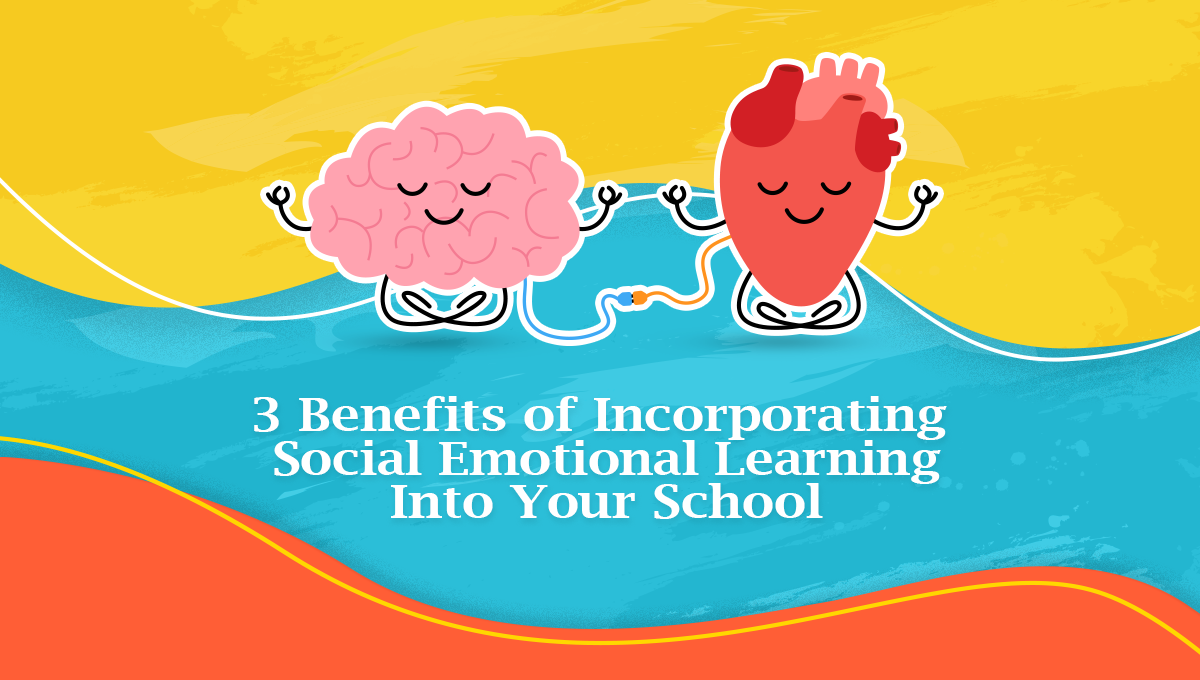School districts around the country are getting back to school amidst the chaotic backdrop of a still-raging coronavirus. There’s an increasingly-raging mask debate, an onslaught of typical back-to-school colds and viruses adding to already woeful school attendance numbers, and each individual family’s own personal struggles and worries. The start of the 2021-2022 school year reminds us that social emotional learning (SEL) should be part of every classroom and community, no matter the age of the student.
SEL, like most subjects under the sun, has been the center of some debate in recent years, with critics on one hand wondering about the relevance of it and, on the other, worrying about the potential “indoctrination” contained within it.
But the heart of SEL lives outside of any one curriculum or ideology. The heart of SEL is the opportunity for all people-- students and adults alike-- to better understand their own thoughts and feelings so that they can better understand and navigate the thoughts and feelings of others. It’s about effective communication skills and deep relationship building. Those skills, I’m certain, cross the lines of all religious/political/pedagogical/ views.
So, while the actual implementation of SEL programming will differ from district to district, it’s important to pause and consider the benefits of even giving the topic attention in our classrooms.
Here are three key benefits to SEL:
1. Our Students’ Future Career Success Just Might Depend On It.
The Center For Creative Leadership cites that as much as “75% of careers are derailed for reasons related to emotional competencies”-- or a lack thereof. Meaning, it’s less often the fact that a person doesn’t have the technical skills to do a job that gets them fired-- it’s more often their inability to handle conflict, to work in a team, or to communicate effectively.
It’s been said that we are teaching children today to prepare them to enter a workforce where they will most likely embark in jobs that don’t even exist yet, using technology that hasn’t even been created yet. A recent article from the PBS News Hour cites a claim by the Institute for the Future that even within the next decade, as much as 85% of the jobs available to our current students will be jobs that don’t currently exist.
Meaning-- we can’t teach our students the technical skills they will need for their professional lives-- because that knowledge isn’t even available to us at the moment. The world is changing too rapidly. But we can prepare them for the human skills they will need to thrive in any work environment-- effective communication, teambuilding, critical thinking, problem solving, empathy…. And these are the skills of SEL.
2. It Increases Trust and Focus- Which Leads To Better Academic Outcomes.
Though the available programs, curricula, and approaches to SEL in our classrooms is widespread, the essential core competencies largely remain the same. Those are:
-
- Self-Awareness
- Self-Management
- Social-Awareness
- Relationship Building
- Responsible Decision Making.
What attention to those skills in our classrooms does is demonstrate that we care about our whole students, not just their math scores. It gives teachers the opportunity to tend to the hearts of their students in order to better open up their minds for skill-building. As Theodore Roosevelt is famed as saying, “People don’t care how much you know until they know how much you care.” And, as beloved educator Rita Pierson reminded us in her remarkable TED talk on the topic, “kids don’t learn from people they don’t like.”
All this to say: our students, like all of us, are dealing with things in the lives they live outside of our classrooms. We can’t just expect them to turn into math or English robots the moment they set foot into our rooms. They walk in as feeling humans, and they leave as feeling humans. It’s our choice as educators to ignore that truth, or welcome it.
Teachers that tend to the social and emotional well being of their students will tell you that their students trust them, and their fellow classmates, more… and they focus better. And a recent report from the RAND Foundation showed that most teachers and administrators believe that social and emotional skill building leads to better academic achievement and behavioral outcomes.
3. It gives language to the thing for which we most struggle to find words.
Whether you are a child or an adult, a student or a CEO, emotions are tricky business. Many of us never learned tools to evenname our emotions, much less navigate them effectively and productively. Many of us fall into one of two camps when it comes to emotions:
- We either stifle them completely, so as to not the ruffle the feathers of the “status quo;” or
- We swing wildly from one dramatic emotion to the next, leaving a trail of confusion and destruction behind us. Neither extreme is conducive to our own long-term well-being, much less the development of healthy relationships and thriving careers.
SEL gives our students language to identify their emotions, and tools to navigate those emotions productively. From understanding the sometimes subtle differences between anger, frustration, sadness and fear; to realizing that how I might experience a situation might be totally different from the way you do. Depending on our individual life circumstances; to recognizing how my decisions impact those around me; the opportunities contained within intentional social and emotional skill building for our young people is limitless. One might consider the competencies of SEL a lit path, offering our students guidance forward.
So as you navigate the beginning, middle, or end of another school year, if you haven’t yet given SEL an intentional focus in your classroom or school community, the opportunity to begin is now, and the potential benefits are limitless.




Comments [0]
Click here to read/write comments